Prajwal Singhania
Power Law Guided Dynamic Sifting for Efficient Attention
Jun 05, 2025Abstract:Efficient inference on GPUs using large language models remains challenging due to memory bandwidth limitations, particularly during data transfers between High Bandwidth Memory (HBM) and SRAM in attention computations. Approximate attention methods address this issue by reducing computational and memory overhead but often rely on expensive top-$k$ operations, which perform poorly on GPUs. We propose SiftAttention, a novel approximate attention method that replaces the top-$k$ step with a computationally efficient element-wise filtering operation based on a threshold value. Our intuition for doing this is based on our empirical observation that the $\tau$-th quantile of attention scores follows a predictable power-law over sequential generation steps. Exploiting this insight, our approach dynamically estimates a threshold value per prompt at each generation step. Only attention scores above this threshold and their corresponding value vectors are loaded/used to compute the attention output, reducing data movement between HBM and SRAM. Our evaluation demonstrates that SiftAttention preserves model quality better than existing approximate attention methods while reducing memory bandwidth usage when loading value vectors.
Democratizing AI: Open-source Scalable LLM Training on GPU-based Supercomputers
Feb 12, 2025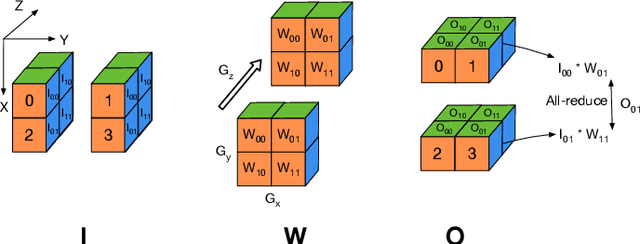
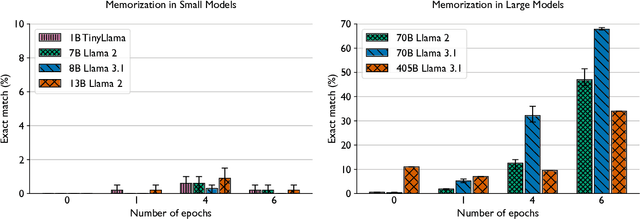
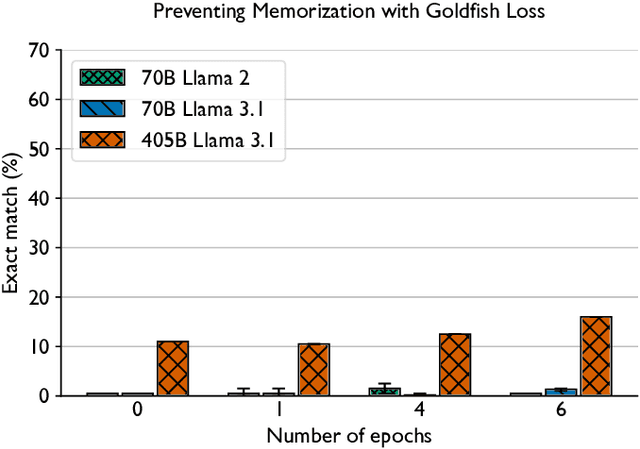
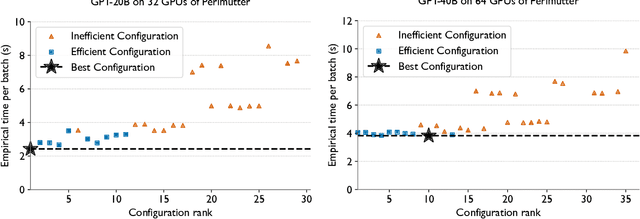
Abstract:Training and fine-tuning large language models (LLMs) with hundreds of billions to trillions of parameters requires tens of thousands of GPUs, and a highly scalable software stack. In this work, we present a novel four-dimensional hybrid parallel algorithm implemented in a highly scalable, portable, open-source framework called AxoNN. We describe several performance optimizations in AxoNN to improve matrix multiply kernel performance, overlap non-blocking collectives with computation, and performance modeling to choose performance optimal configurations. These have resulted in unprecedented scaling and peak flop/s (bf16) for training of GPT-style transformer models on Perlmutter (620.1 Petaflop/s), Frontier (1.381 Exaflop/s) and Alps (1.423 Exaflop/s). While the abilities of LLMs improve with the number of trainable parameters, so do privacy and copyright risks caused by memorization of training data, which can cause disclosure of sensitive or private information at inference time. We highlight this side effect of scale through experiments that explore "catastrophic memorization", where models are sufficiently large to memorize training data in a single pass, and present an approach to prevent it. As part of this study, we demonstrate fine-tuning of a 405-billion parameter LLM using AxoNN on Frontier.
Be like a Goldfish, Don't Memorize! Mitigating Memorization in Generative LLMs
Jun 14, 2024



Abstract:Large language models can memorize and repeat their training data, causing privacy and copyright risks. To mitigate memorization, we introduce a subtle modification to the next-token training objective that we call the goldfish loss. During training, a randomly sampled subset of tokens are excluded from the loss computation. These dropped tokens are not memorized by the model, which prevents verbatim reproduction of a complete chain of tokens from the training set. We run extensive experiments training billion-scale Llama-2 models, both pre-trained and trained from scratch, and demonstrate significant reductions in extractable memorization with little to no impact on downstream benchmarks.
Loki: Low-Rank Keys for Efficient Sparse Attention
Jun 04, 2024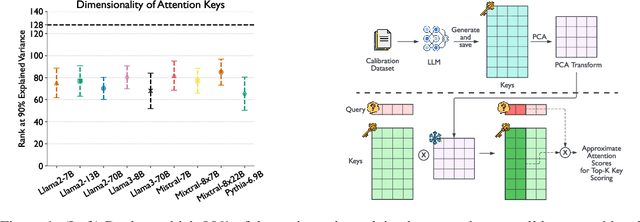

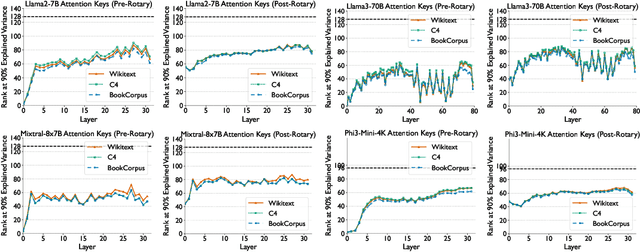

Abstract:Inference on large language models can be expensive in terms of the compute and memory costs involved, especially when long sequence lengths are used. In particular, the self-attention mechanism used in such models contributes significantly to these costs, which has resulted in several recent works that propose sparse attention approximations for inference. In this work, we propose to approximate the self-attention computation by focusing on the dimensionality of key vectors computed in the attention block. Our analysis reveals that the key vectors lie in a significantly lower-dimensional space, consistently across several datasets and models. Exploiting this observation, we propose Loki, a novel sparse attention method that ranks and selects tokens in the KV-cache based on attention scores computed in low-dimensional space. Our evaluations show that Loki is able to maintain the efficacy of the models better than other popular approximation methods, while speeding up the attention computation due to reduced data movement (load/store) and compute costs.
Alternating Direction Method of Multipliers for Quantization
Sep 08, 2020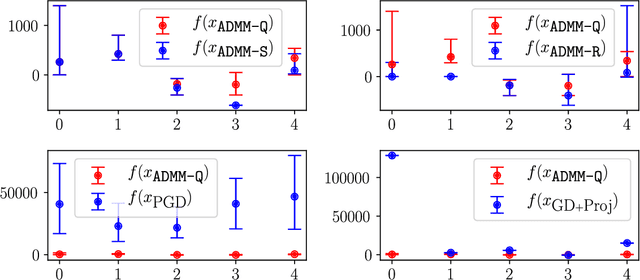
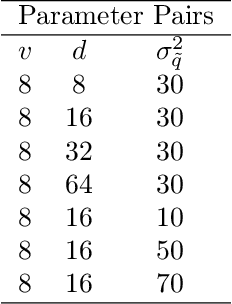
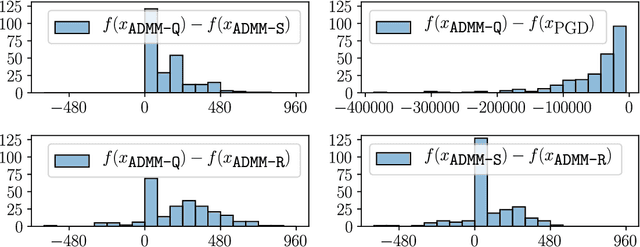

Abstract:Quantization of the parameters of machine learning models, such as deep neural networks, requires solving constrained optimization problems, where the constraint set is formed by the Cartesian product of many simple discrete sets. For such optimization problems, we study the performance of the Alternating Direction Method of Multipliers for Quantization ($\texttt{ADMM-Q}$) algorithm, which is a variant of the widely-used ADMM method applied to our discrete optimization problem. We establish the convergence of the iterates of $\texttt{ADMM-Q}$ to certain $\textit{stationary points}$. To the best of our knowledge, this is the first analysis of an ADMM-type method for problems with discrete variables/constraints. Based on our theoretical insights, we develop a few variants of $\texttt{ADMM-Q}$ that can handle inexact update rules, and have improved performance via the use of "soft projection" and "injecting randomness to the algorithm". We empirically evaluate the efficacy of our proposed approaches.
Stance Detection in Web and Social Media: A Comparative Study
Jul 12, 2020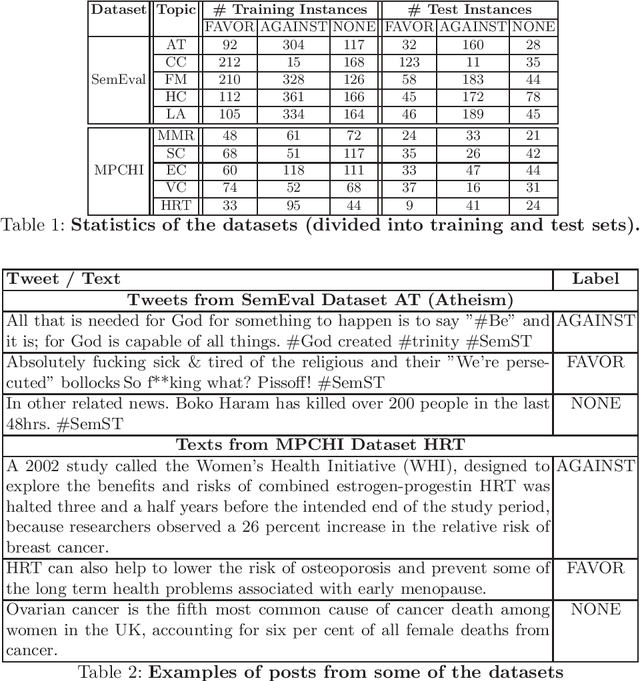
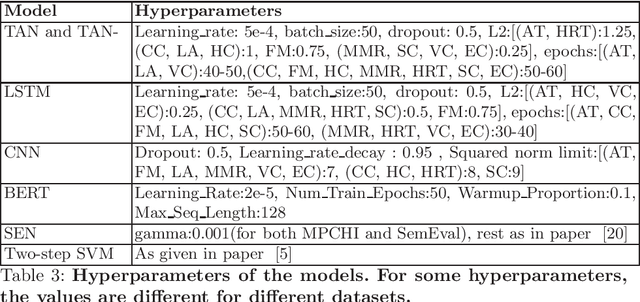
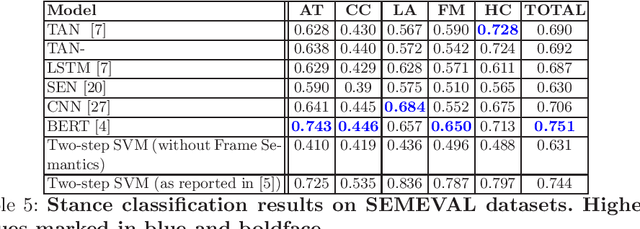
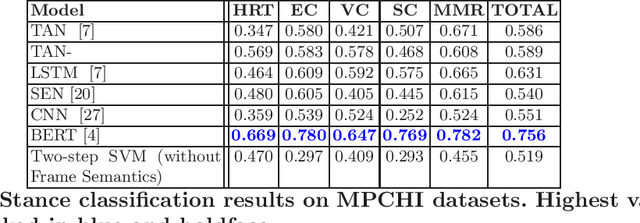
Abstract:Online forums and social media platforms are increasingly being used to discuss topics of varying polarities where different people take different stances. Several methodologies for automatic stance detection from text have been proposed in literature. To our knowledge, there has not been any systematic investigation towards their reproducibility, and their comparative performances. In this work, we explore the reproducibility of several existing stance detection models, including both neural models and classical classifier-based models. Through experiments on two datasets -- (i)~the popular SemEval microblog dataset, and (ii)~a set of health-related online news articles -- we also perform a detailed comparative analysis of various methods and explore their shortcomings. Implementations of all algorithms discussed in this paper are available at https://github.com/prajwal1210/Stance-Detection-in-Web-and-Social-Media.
 Add to Chrome
Add to Chrome Add to Firefox
Add to Firefox Add to Edge
Add to Edge